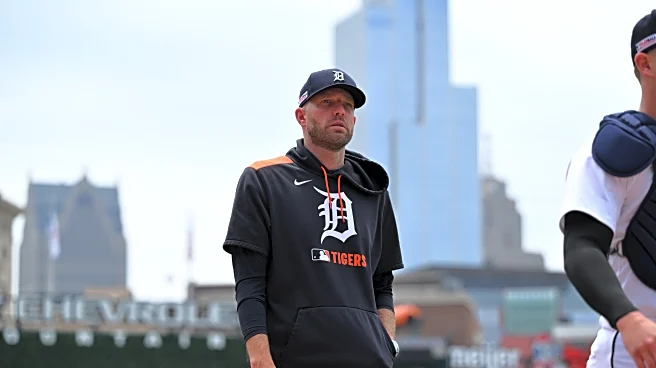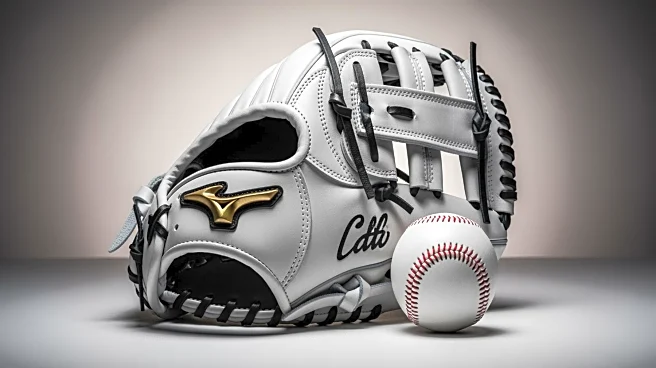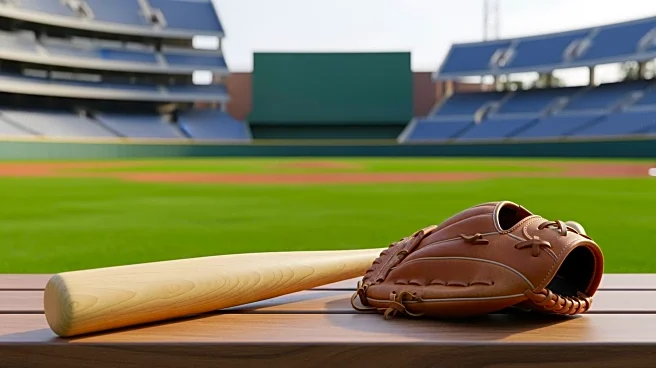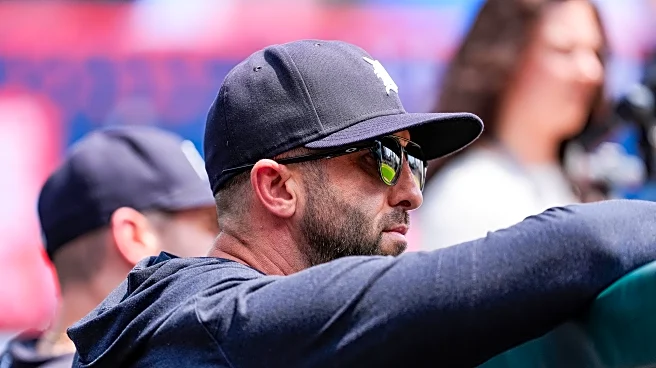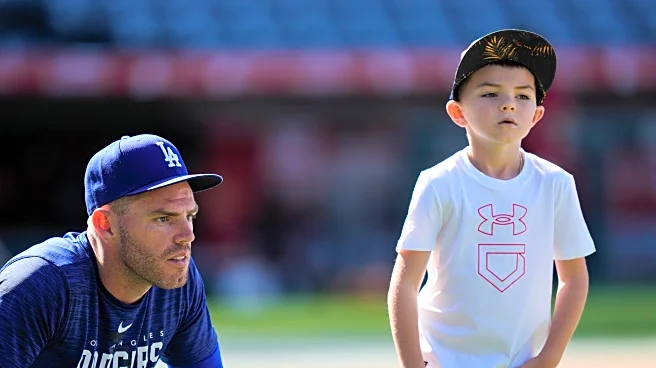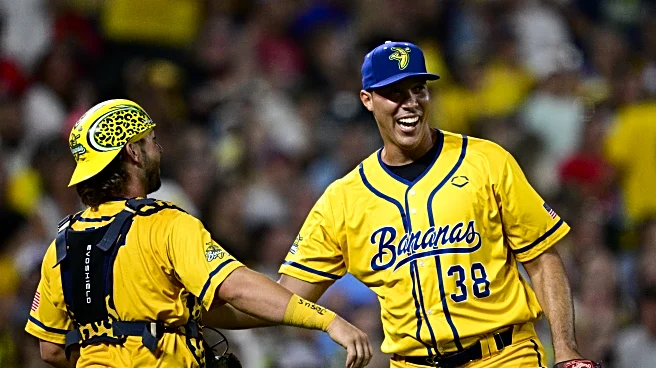With the World Series set to conclude on Saturday night, the offseason is almost here. Before anything too significant happens, the Detroit Tigers are working their way through some minor league housekeeping.
On Friday, news emerged that they re-signed RHP Troy Watson to a minor league deal for 2026 with an invitation to spring camp. Watson pitched for the Triple-A Mud Hens last year, and the 28-year-old was very close to making his major league debut in September. Let’s investigate what is holding the Tigers attention in his case.
Watson was originally drafted back in 2018 by the Toronto Blue Jays back with their 15th round selection out of the University of Northern Colorado. He was just a project arm at that point, and after sitting out the COVID year in 2020, Watson then blew out his elbow and required UCL reconstruction surgery in 2021. When he finally got going in earnest as a professional it was 2022 and Watson was already 25 years old.
His stuff popped significantly in A-ball and he posted some outstanding strikeout rates and great numbers in 2022, but his jump to Double-A in 2023 saw him struggle to level up and his walk rates spiked while his strikeout rates dropped. By now his breaking stuff was pretty well regarded but his fastball remained pretty average and he couldn’t put it all together in terms of controlling what had become a pretty deep arsenal of pitches.
Walks continued to plague him at the Triple-A level, but the real problem developing as he dealt with the ABS system was his fastball command. The strike zone and a more experienced level in terms of hitting took their toll on Watson as for the first time in his career home runs became a problem for him. The Blue Jays couldn’t quite crack the code, and eventually they traded him to the Tigers in a cash deal in August of 2024.
He came to Detroit completely unheralded, looking like another minor league depth arm to fill a hole as the Tigers called up their young starting pitching prospects to embark on the pitching chaos strategy that carried them to the postseason. He racked up his share of whiffs with the Tigers, but the walks and home runs remained a big problem. The Tigers saw enough to bring him back on a minor league deal in 2025, and finally this year Watson’s command started to come around.
The Tigers sent him back to Double-A for half of the 2025 season. They converted him to relief work during his time there and pitching in those short bursts seemed to help him lock in. He finally cut his walk rates significantly and stopped giving up home runs in bunches. Whether this was a plan to help him dial things in or whether they intended on using him a reliever for good is unknown, but either way it worked and the Tigers eventually started easing him back into a starting role in late June through July before promoting him back to Triple-A Toledo just before the trade deadline.
There he finally conquered the ABS strike zone, cutting his walk rate down to seven percent after spending most of his time in the upper levels of the minor leagues with walk rates over 10 percent. His home runs allowed spiked again and his strikeout rates remained pretty pedestrian, but he looked like a potential innings eater who would do no worse that Charlie Morton and Chris Paddack had in a starting role. Down the stretch there were repeated murmurs from sources that he might get a call-up and a spot start, but his major league debut never arrived.
So, why are the Tigers so interested in a 28-year-old right-hander who still hasn’t made his major league debut?
Watson is grading out very well in terms of Stuff+ and his nasty sweeper and cutter combination is the main reason. Indeed, Watson was the only upper level starter to grade out above average in the Stuff+ metric, and while his path to a long career as a major league starter is going to remain a narrow one, there is enough here to think he might make a pretty effective reliever who leans heavily into his breaking stuff and pitches backwards out of the pen.
The bread and butter for Watson is his cutter and sweeper combo. The sweeper is the pitch the Tigers will be trying to bring to the forefront, however they ultimately decide to use him in the majors should he get there. The sweeper has a pretty high spin rate at 2723 rpms, averages 82.6 mph out of his hand, and produced a whiff rate of 37.2 percent with the Mud Hens. The Tigers like sweepers these days, and numerous pitchers adapting their curveball into a sweeper has been a trend in the system over the last year or two. In fact, Baseball America graded the Tigers farm system as the best in baseball in terms of sweeper Stuff+, pointing out that they were excelling in developing this pitch.
Watson posted a .307 wOBA against his sweeper in 2025, which is good but nothing special at the Triple-A level. The problem there remains a few too many hangers, particularly the second time through an order. However, his 87.3 mph cutter produced a truly miserly .144 wOBA against, and also racked up whiffs at a 30.8 percent rate. When he had command of the cutter and sweeper both, hitters were in big trouble against him.
Watson also packs a very effective changeup, but he still isn’t using it a whole lot. He threw it only 11 percent of the time with the Mud Hens. But that pitch drew a whopping whiff rate of 41 percent and hitters could do nothing against it. He posted a .093 wOBA against the pitch with the Hens and held left-handed hitters overall to a .280 wOBA, with even his fourseamer playing better against them.
As you’d expect then, Watson’s problem is a fringy fastball that gets hit around too much when he’s not really sharp with his command. Watson’s fourseamer averages 94.6 mph, but lacks any outstanding qualities in terms of extension and movement to help it play up. It could play as an average heater if his command was more precise, and maybe the Tigers think that Chris Fetter can get more out of it by having Watson mix his sinker into his fastball usage more consistently to jam right-handers. This is roughly the path Reese Olson took to get over his fastball problems in the upper minors and allow his nasty breaking stuff and changeup to play at the major league level. In Watson’s case, the Tigers will probably just move him back to relief should he break through to the major leagues, where he won’t need to use his fourseamer all that much.
There’s plenty of work with here, and Watson came back to Triple-A with a more composed set of pitches that work well together when his command is sharp. If he can take that next step, he’ll be able to mix fastball types to throw enough strikes and get to his three best pitches without getting hit around too much. That’s still the sticking point for Troy Watson despite all the progress in other areas.
Not too many pitchers really break through at age 28 in a starting role. As a reliever it’s much more common and that’s probably all that can really be hoped for here. Despite his age, Watson’s progress was derailed by elements out of his control from 2020-2022. Since that point he’s made steady progress with his stuff, and progress with his command of the whole pitch mix finally started coming together in 2025.
The Tigers clearly like Troy Watson enough to bring him back, and after re-signing veteran catcher Tomas Nido to a minor league deal that includes a guarantee of $1.5M should he make the major league roster in 2026, the Tigers used similar incentives to get Watson to return. He’ll make $1.2M in the major leagues if he can break through in 2026, per Evan Petzold of the Free Press.
The real offseason begins now, but building up depth is always a crucial and generally overlooked part of putting together a major league roster all throughout the year. It’s still a coin flip as to whether Watson can finally make good on his promise and become a useful major league pitcher, but he’ll get one more shot at it in 2026.
